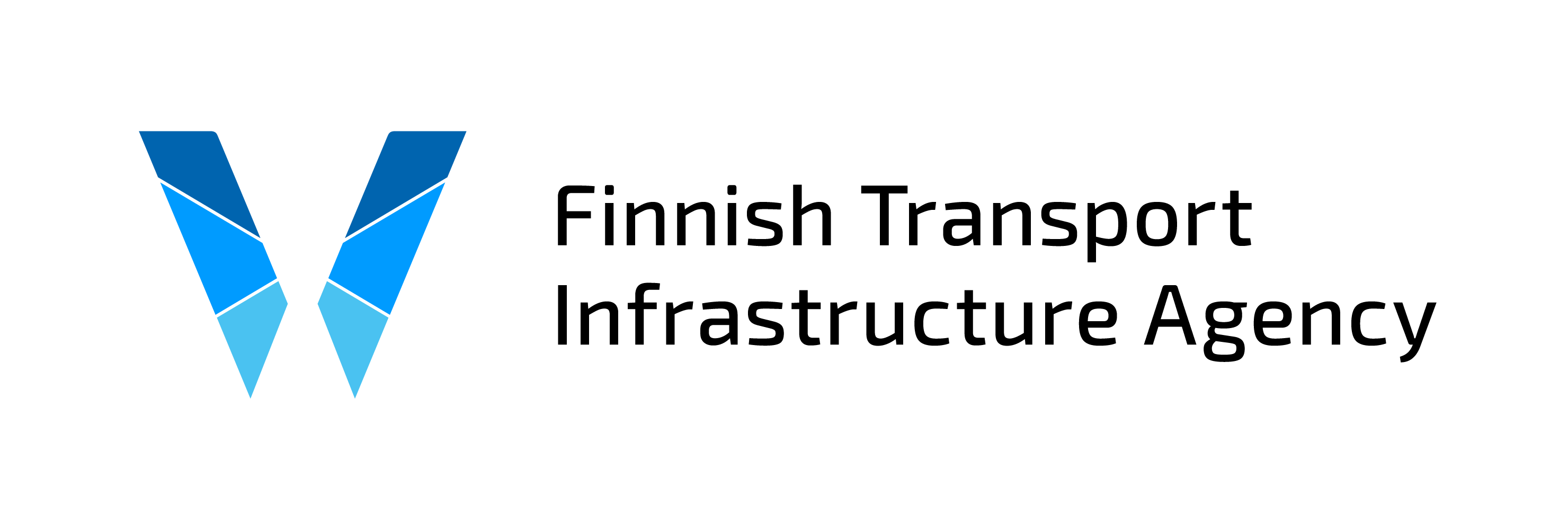The Russian invasion of Ukraine and its impacts on such matters as the world market prices of oil and steel products have also significantly affected the operating environment of transport infrastructure management. Rapid inflation and rising costs weaken purchasing power in both basic infrastructure management and transport development investments.
The effects of the Russian invasion of Ukraine are also seen in Finland’s transport network and especially in cross-border traffic. Freight traffic flows and transport needs can change rapidly. The changed world situation is also reflected in the absence of traffic in the Saimaa Canal and the rerouting of foreign trade flows from Southeastern Finland through the ports of the eastern Gulf of Finland and the Gulf of Bothnia.
The new world situation has required rapid decisions but a number of long-term development projects are also under way. The electrification of the railway line between Tornio and Haparanda is proceeding as planned and the project has also received funding from the EU and the National Emergency Supply Agency. The work will start early next year and will be completed by the end of 2024.
Preparedness in the logistics sector is based on market-based logistics services, a well-functioning infrastructure and cooperation between business operators and the public sector. Therefore, it should be recognised that infrastructure investments and sufficient inputs in basic transport infrastructure management also boost Finland’s security of supply. The floating LNG terminal in Inkoo will also make an important contribution to ensuring Finland’s energy supply.
We must all work together to reduce transport emissions
Climate change increases the risk of extreme weather phenomena, which may cause serious disruptions to the functioning of society and accelerate the need for repairs of transport infrastructure. New solutions and new expertise are also needed for climate change mitigation and adaptation in transport infrastructure management and transport system planning. Circular economy is the key means to reduce the consumption of natural resources and safeguarding biodiversity in the construction and maintenance of transport infrastructure.
Finland aims to halve its transport emissions by 2030 from 2005 levels and make its transport sector fossil-free by the year 2045. Transport emissions can be reduced by means of transport system planning, electrification of road traffic and boosting of rail traffic. The Finnish Transport Infrastructure Agency takes into account the emission reduction targets for the transport sector in all its activities, both in the planning of transport infrastructure management and the transport system as well as in project planning and evaluation.
In transport system planning, priority is given to solutions that guide sustainable transport and mitigate climate change. In line with this, three objectives (accessibility, sustainability and efficiency) were set for the first national transport system plan (Transport 12), which was prepared by a parliamentary committee. The objectives complement each other and they all seek to mitigate climate change.
Selection criteria
The transport infrastructure investment programme is part of the National Transport System Plan (Transport 12) and it contains the expert opinion of the Finnish Transport Infrastructure Agency on the construction of new rail, road and waterway projects and their impacts.
The investment programme is prepared by the Finnish Transport Infrastructure Agency and it is based on the information produced by impact assessments. The major impacts of each project have been identified in the impact assessment. The estimated total impacts indicate how the investment programme will help to make the Transport 12 plan and its accessibility, sustainability and efficiency targets a reality. When the projects are selected, priority is given to projects promoting the objectives set out in the Transport 12 plan with maximum effectiveness. However, Finnish Parliament has the final say on the implementation of the development projects listed in the investment programme.
The programme will be updated each year and the next investment programme (2024–2031) will be presented in spring 2023.

Kari Wihlman
Director General of the Finnish Transport Infrastructure Agency
